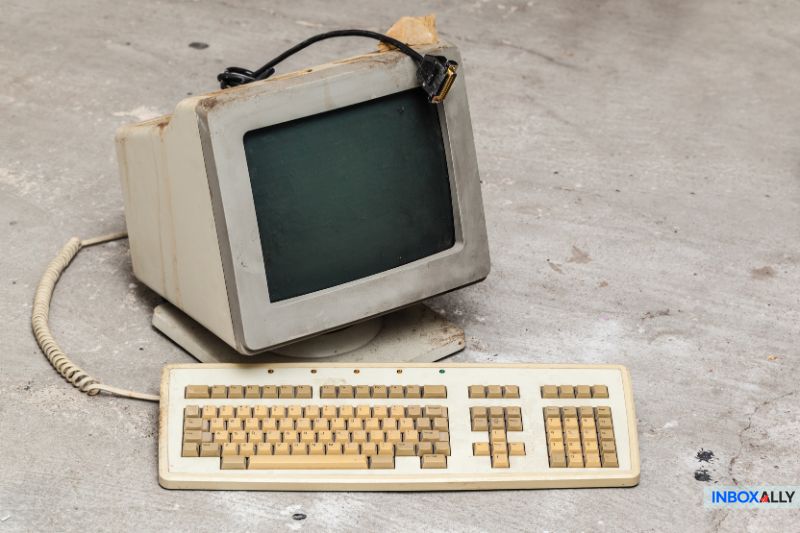Most people don’t remember choosing how their email works.
You set up your account, everything looks fine… until things stop syncing. Messages disappear. Replies go missing. Folders don’t match. And suddenly you’re wondering why your inbox behaves like it has a mind of its own.
At the heart of it are two protocols most users never touch: IMAP and POP3.
They’re not features or settings you click on every day, but they define how your inbox works across multiple devices and whether it stays in sync or slowly drifts into chaos.
One was designed for a cloud-connected, multi-device world, while the other was built for the ‘90s—literally. So what’s the difference?
One Inbox, Two Devices, Total Chaos
Have you ever opened your inbox on your phone, cleared out a few emails, then hopped onto your laptop, and.. they’re still there? Or maybe you reply to something from your computer, then later check your tablet and can’t find that reply anywhere.
It can be confusing but don’t worry, it’s not a bug. It’s just the way your email is set up.
There are two settings quietly working in the background: IMAP (Internet Message Access Protocol) and POP3 (Post Office Protocol 3).
It sounds techy, but there are just two ways your email client (like Microsoft Outlook, Apple Mail, or whatever you use) talks to the remote server where your emails live.
- IMAP connects to the email server and keeps everything on it. Your devices just show you what’s on the server. So if you delete a message on your phone, it’s gone on your laptop too. If you move something to a folder, it’s moved everywhere. Everything stays in sync- simple and consistent.
- POP3 works differently. It downloads emails to your device and (unless you tweak the settings) deletes them from the server afterward. That’s why your laptop might have emails your phone doesn’t and why your “Sent” folder looks different on each device.
So this isn’t about one being right and the other being wrong, it’s just about how they work. IMAP is built for people who check email from multiple computers. POP3 assumes you’ll only check it from one.
Email behavior looking off? Email protocols are just the start. InboxAlly helps you see what exactly impacts your inbox placement. Run a free deliverability check and see where your emails are landing.
What POP3 Does (And Why It’s Outdated)
POP3 wasn’t made for how we use email today. It comes from a whole different era, the early ’90s, dial-up internet connection, one big family computer in the living room.
Back then, checking email meant logging in, downloading your messages, disconnecting to avoid racking up the phone bill, and reading everything offline. For that setup, POP3 actually made a lot of sense.
So What Does It Do?
POP3 is designed to connect to your mail server, retrieve emails, download them to your device, and then, by default, delete them from the server. That’s the key detail: your inbox lives on your computer, not in the cloud.
So you check your email on your work desktop in the morning. Everything downloads there. Later that night, you open your laptop at home and your inbox looks empty not because the emails never came, but because POP3 already moved them.
But if that desktop crashes or gets wiped, your whole inbox could be gone unless you have a manual backup.
Now, POP3 isn’t all bad. It works offline, so no special setup is needed. It uses barely any server storage (which was a big selling point when storage space was expensive). And it’s made only to download messages once, so it’s easy on bandwidth. That’s why some older email providers—and even some default desktop setups—still use it.
There are ways to tweak POP settings so emails stay on the server. But most people don’t know that’s an option. And besides that, you’re not exactly thinking about server retention policies when you’re setting up an email account.
But losing emails is one thing. Landing in spam is worse. InboxAlly trains inboxes to recognize you as a trusted sender. Start improving your reputation today (no complicated setup needed).
How IMAP Works and Why It’s the Default Today
Unlike POP3, IMAP is designed for the way we live and work now. It assumes you’re going to check your email from a phone, a laptop, maybe even someone else’s computer. And it’s designed to keep everything in sync across all of them.
IMAP connects your email app directly to the IMAP server. Your messages stay there. They’re not downloaded and deleted—they just sit on the server until you decide what to do with them. Every time you open your inbox, you see a live update, and if you read, delete, or move something, that update applies everywhere.
IMAP also supports folders, flags, labels, and even search filters across platforms. It doesn’t download your entire mailbox by default, either—it loads emails and attachments when you open them. Less clutter, less bandwidth, and way more control.
Now, yes—it does use a bit more bandwidth than POP3. It’s syncing a lot in the background. But the upside is you don’t lose your inbox if a device crashes. Your folders, structure, and message history are all stored safely on the server.
That’s why almost every modern email app defaults to IMAP.
Your email strategy can’t work without important deliverability metrics. InboxAlly gives you the visibility you need across ISPs, folders, and engagement. Fix blind spots in your sending strategy—see how InboxAlly works.
Why POP3 Breaks Team Email, Tracking, and Deliverability
This isn’t just about losing track of your own inbox. POP3 can quietly derail how teams work, how systems sync, and how campaigns are measured without anyone realizing why.
Let’s say you’re sharing an inbox with a teammate. One of you downloads an email using POP3; now it’s gone for everyone else. But that’s just how POP3 handles email—poorly, in this case.
Now, imagine you’re running a cold email campaign or warming up a domain. You need to know what’s happening—who opened what, which emails got replies, and what’s been deleted. POP3 makes that hard to track. Messages go missing from the server, and your tools lose sight of them.
With IMAP, doing this is much easier. All devices and tracking systems see the same inbox. That’s critical if you’re:
- On a sales or support team using shared inboxes
- An agency sending high-volume campaigns
- A marketer watching deliverability and engagement
We’ve seen people unknowingly set up POP3 and wonder why their webmail is empty or their automation breaks. It’s a quiet misconfiguration with real consequences.
If your inbox feels off, check the foundation. POP3 might be the problem. IMAP, the fix.
Conclusion: It’s Time to Switch From POP3
If your inbox is acting weird—emails are missing, folders are out of sync, messages show up in strange places—it might not be your provider’s fault. It might just be POP3.
POP3 worked fine when email lived on one computer. But today, we access email from phones, laptops, browsers, and automation tools. IMAP has been designed for that world.
If you’re still on POP3 (and you might be without even knowing), it’s probably time to make the switch. Most modern apps have already moved on, and you should too.




